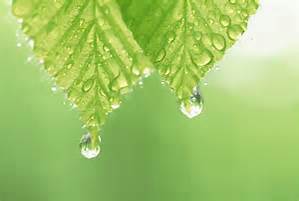CALAMUS











CALAMUS
Acorus calamus varangustatus
FAMILY: Araceae
SYNONYMS Calamus aromaticus, sweet flag, sweet sedge, sweet root, sweet rush, sweet cane, sweet myrtle, myrtle grass, myrtle sedge, cinnamon sedge.
GENERAL DESCRIPTION
A reed-like aquatic plant about 1 metre high, with sword-shaped leaves and small greenish-yellow flowers. It grows on the margins of lakes aaand streams with the long-branched rhizome immersed in the mud. The whole plant is aromatic.
DISTRIBUTION
Native to India:the oil is mainly produced in India and Russia and to a lesser extent in Europe (except Spain), Siberia, China, Yugoslavia and Poland (Polish and Yugoslavian oils have a uniform lasting scent.
OTHER SPECIES
Not to be confused with the yellow flag iris which it resembles in appearance;they are botanically unrelated . There are several other varieties of aromatic sedge, mostly in the east, for example Calmamus odoratus used in India as a medicine and perfume.
HERBAL/FOLK TRADITION
The name derives from the Greek calamos meaning 'reed'. The properties of the herb are mainly due to the aromatic oil, contained largely in the root. It used to be highly estimeed as an aromatic stimulant and tonic for fever (typhoid) nervous complaints , vertigo,headaches, dysentery, ect.
It is still current in the British Herbal Pharmacopoeia, for 'acute and chronic dyspepsia, gastritis, intestinal colic, anorexia, gastric ulcer.
In Turkey and especially in India (where it is valued as a traditional medicine) it is sold as a candied rhizome for dyspepsia, bronchitis and coughs.
ACTIONS
Anticonvulsant, antiseptic, bactericidal, carminative, diaphoretic, expectorant, hypotensive, insecticide, spasmolytic, stimulant, stomachic, tonic, vermifuge.
EXTRACTION
Essential oil by steam distillation from the rhizomes (and sometimes the leaves).
CHARACTERISTICS
A thick, pale yellow liquid with a strong, warm, woody-spicy fragrance, poor quality oils have a camphoraceous note. It blends well with cananga, cinnamon, labdanum, olibanum, patchouli, cedarwood, amyris, spice, and oriental bases.
PRINCIPAL CONSTITUENTS - Beta-asarone
(amounts vary depending on source: the Indian oil contains up to 80 per cent, the Russian oil a maximum of 6 per cent), also calamene, calamol, calamenene, eugenol and shyobunones.
SAFETY DATA
Oral toxin. the oil of calamus is reported to have carcinogenic properties.
AROMATHERAPY/HOME USE
None.'should not be used in therapy, whether internally or externally.
OTHER USES
Extensively used in cosmetic and perfumery work, in wood/oriental/leather perfumes and to scent hair powders and toothe powders in the same way as orris. Calamus and its derivatives (oil, extracts, etc.) are banned from use in foods.
Reference: The Encyclopedia of Essential oils: Julia Lawless
Articles Latest
- Chamomile Roman - Chamaemelum nobile
- Chamomile Maroc - Ormenis multicaulis
- Chamomile German - Matricaria recutica
- From Biology To Aromatherapy
- Plant Messengers
- Celery Seed-Apium graveolens
- Cedarwood Virginian - Juniperus virginiana
- Cedarwood, Texas- Juniperus ashei - Essential oils
- Cedarwood Atlas- Cedrus atlantica - Essential Oils
- Cassie - Acacia Farnesiana - sweet acacia
- Cassia - Cinnamomum Cassia
- Cascarilla Bark - Croton eluteria
- Carrot Seed- Dacus Carota
- CARDAMON
- CARAWAY
- CANANGA
- CAMPHOR
- CALAMUS
- Calamintha-Calamintha officinalis
- CAJEPUT- Melaleuca cajeputi
- Plant Expression
Articles-Most Read
- Home
- Balsam Canadian - Abies balsamea
- Balsam Peru
- Copaiba Essential Oil
- North America: Tea Tree and Monarda-3
- Basil French - Ocimum basilicum
- Basil Exotic
- North America: Tea Tree and Monarda-2
- Exploring Transcultural Constants
- Thyme Essential Oil
- Balsam Tolu
- Palma Rosa
- Bay - West Indian - Pimenta racemosa
- The Bioactivity of Essential Oils
- Benzoin - Styrax benzoin
- Why Pharmacology Cannot Demonstrate Essential Oil Efficacy
- Exploring Essential Oil Activity The Conventional Way
- Complex information From Plants
- Aromatherapy: An Answer
- Contacts
